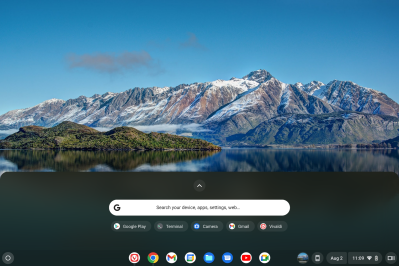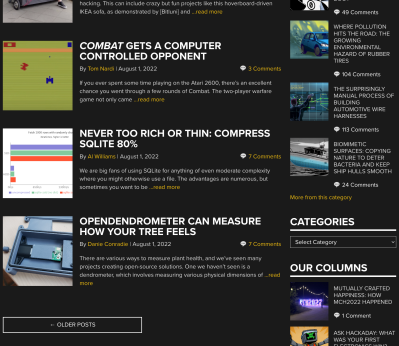

You’ve probably heard about Google Chromebooks. Like Android, Chrome OS is based on some variant of Linux, but it is targeted at the “cloud first” strategy so Chromebooks typically don’t have a huge amount of storage or compute power. If you have a real Chromebook, you can also use it to run certain other kinds of programs via virtualization. However, Google has recently pushed out Chrome OS Flex which is meant to install on a spare laptop you might happen to have hanging around. Seems attractive to take that only Windows 7 laptop and repurpose it to run Chrome OS, especially if you can run Linux apps on it. Unfortunately, Chrome OS Flex has a very different use case and I would only recommend installing it if you meet the exact use case it addresses.
The other option, of course, is to just install Linux on that old hardware. There are several distributions that are made for that purpose and, honestly, even most of the major distributions will work fine on older hardware with a little tweaking to turn off some of the more resource-costly features. That assumes you know how to install, tweak, and maintain Linux.
That’s What It is For
That is, in fact, the exact use case for Chrome OS Flex. If you want to give Grandpa your old laptop, putting Linux on it can be very challenging, unless Grandpa is pretty tech-savvy. Even people who are pretty comfortable with Windows or the Mac can find the number of options, log files, and command lines daunting for Linux. Some distributions are better than others, but in the end, if you are having a bad day, you really need to know something about the system or be willing to learn it.
Chrome OS deliberately doesn’t give you much choice. The installation is painless but inflexible. You have to create a USB drive on a working computer and the installer gives you no options to, say, install as a secondary operating system. You can boot from the USB and either try the OS in live mode or install it, wiping out your hard drive. That’s it.
If all you want to do is surf the web and use Chrome-based applications, that’s great! The system works well and is pretty snappy. But what about running apps from other systems? Unlike real Chrome OS, you can’t run Android apps or much of anything else. You can, maybe, run Linux applications, but there are a few catches.
Real World
I installed the OS on an old HP X2 3-in-1 convertible I happened to have retired. I’ll admit it was easy and the performance was fine — much better than the Windows 11 I had force-installed on the old hardware. But I was disappointed to find there was no option in the Developer mode to enable the Linux subsystem. The hardware isn’t on the approved list so you had to accept that the front camera didn’t work. In addition, the fancy back camera had some issues, although it usually was workable.

The reason? Virtualization was turned off in the laptop’s BIOS. Once you turn that on, the option appears and you can install a basic Debian-based Linux OS. However, it is not running on the ChromeOS Linux instance. It is virtual. That means that you have your own root file system that is different from the “real” file system. There are a few other issues with trying to use Linux-based software. Some devices –notably the cameras — are not accessible from within Linux, for example. So you can’t videoconference with a Linux browser — at least not without tweaking; there may be some way to make it work.
Installing Snap, for example, required the addition of squashfs which did not occur automatically. Some installed software just doesn’t work. Vivaldi, a Chrome alternative, did work, but since it isn’t in the main space, it can’t replace Chrome in general.
No Android?
What about Android apps? Could something like AnBox allow you to run Android apps even on Flex? Maybe, but it would not easily install since you need kernel module support. So while you can run Linux on Chrome OS Flex, it requires a lot of tweaking and modification and still doesn’t support everything. At that point, why not just load Linux?
There’s really nothing Chrome OS Flex does that Linux can’t do at least as well, and perhaps better, other than the simple experience of installing, using, and maintaining. But once you try to install Linux software you are back to hacking missing packages and reading error logs. Why bother?
Is it Just Me?
But if you don’t care about running Android or Linux apps, it is a great way to revive an old laptop as a web appliance. Just don’t expect it to be your daily Linux drive. After my experience, I noted the YouTube video below called “Chrome OS Flex is a NIGHTMARE.” I don’t know if I’d go that far, but his experiences mirror mine and you might want to watch to see how it handles some other laptops, Steam, and a few other applications. You can’t beat the price and, for just the right use case, it might be just the ticket. For everyone else, just install Linux.
Will you try Flex? If not, what would make you think about it? Android emulation? Windows emulation? Access to the underlying Linux system?
0 Commentaires